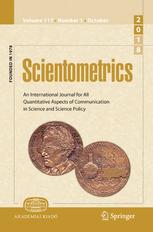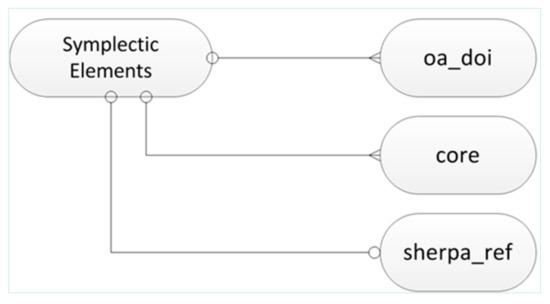Authors: Laurence Hopkins and Viola Salvestrini for the Universities and Colleges Employers Association (UK), November 2018
Notes: Report examining pay disparities across three broad groups in UK academia (black, asian, white) and with respect to gender. Finds significant disparities that are more significant than gender gaps and that gender gap in pay is greatest for white staff. Differences are seen across academic and professional staff but the differences are greater when academic staff alone are considered.
Abstract: Caught at the crossroads? An intersectional approach to gender and ethnicity pay gaps takes an ‘intersectional’ approach to pay gaps by looking at ethnicity and gender together, rather than in isolation. The report shows that ‘pay penalties’ for ethnic minority groups are significant, with Black men and Black women earning the least on average relative to White men. The report includes recommendations for employers to consider when looking at gender and ethnicity pay gaps and when developing action plans.
Author: Cameron Neylon
Google Scholar to overshadow them all? Comparing the sizes of 12 academic search engines and bibliographic databases | SpringerLink
Google Scholar to overshadow them all? Comparing the sizes of 12 academic search engines and bibliographic databases
Author: Michael Gusenbauer
Notes: An interesting study using a search term strategy to examine the size of databases. Wondering whether something analagous can be used to estimate the size of sets based on partial data. Here they use a range of searches from single letters and numbers through to common words to estimate the scale of various databases. They find Google Scholar is significantly larger in terms of search results.
Abstract: Information on the size of academic search engines and bibliographic databases (ASEBDs) is often outdated or entirely unavailable. Hence, it is difficult to assess the scope of specific databases, such as Google Scholar. While scientometric studies have estimated ASEBD sizes before, the methods employed were able to compare only a few databases. Consequently, there is no up-to-date comparative information on the sizes of popular ASEBDs. This study aims to fill this blind spot by providing a comparative picture of 12 of the most commonly used ASEBDs. In doing so, we build on and refine previous scientometric research by counting query hit data as an indicator of the number of accessible records. Iterative query optimization makes it possible to identify a maximum number of hits for most ASEBDs. The results were validated in terms of their capacity to assess database size by comparing them with official information on database sizes or previous scientometric studies. The queries used here are replicable, so size information can be updated quickly. The findings provide first-time size estimates of ProQuest and EbscoHost and indicate that Google Scholar’s size might have been underestimated so far by more than 50%. By our estimation Google Scholar, with 389 million records, is currently the most comprehensive academic search engine.
Gusenbauer, Michael. 2018. “Google Scholar to Overshadow Them All? Comparing the Sizes of 12 Academic Search Engines and Bibliographic Databases.” Scientometrics, November. https://doi.org/10.1007/s11192-018-2958-5.
Virtual Issue: Measuring the Impact of Arts and Humanities Research in Europe | Research Evaluation | Oxford Academic
How significant are the public dimensions of faculty work in review, promotion, and tenure documents?
Authors: Juan Pablo Alperin, Gustavo E. Fischman, Erin C. McKiernan, Carol Muñoz Nieves, Meredith T. Niles, Lesley Schimanski
Summary: The authors examine tenure and promotions requirements documents from 129 North American universities looking for evidence of interest in engagement, open access and other community/public focussed activities. Relatively little is found and the the word ‘community’ is often co-located with words dealing with professional and academic service suggesting an inward looking focus. Also interesting from its perspective on textual analysis as a tool for analysis.
Abstract: Much of the work of universities, even private institutions, has significant public dimensions. Faculty work in particular is often funded by public funds, is aimed at serving the public good, and is subject to public evaluation. To understand how the public dimensions of faculty work are valued, we analyzed review, tenure and promotion documents from a representative sample of 129 Canadian and American universities. We found terms and concepts related to public and community are mentioned in a large portion of documents, but mostly in ways that relate to service—an undervalued aspect of academic careers. Moreover, we find significant mentions of traditional research outputs and citation-based metrics. Such outputs and metrics reward faculty work targeted to academics, and mostly disregard the public dimensions. We conclude that institutions that want to live up to their public mission need to work towards systemic change in how faculty work is assessed and incentivized.
Alperin, J.P., Muñoz Nieves, C., Schimanski, L., Fischman, G.E., Niles, M.T. & McKiernan, E.C. (2018). How significant are the public dimensions of faculty work in review, promotion, and tenure documents? Humanities Commons [preprint]. https://doi.org/10.17613/M6W950N35
Adding the diversity dimension | Wonkhe Australia
Author: Julie-Hare
Summary: A description of a new report on Australian HE regulation and financing and its relation with diversity. The report argues that a more dynamic system that offers real student choice can be constructed within the current structural framework that includes the Australian Qualifications Framework, as well as regulation and funding responsibilities. But in order to do so it would have to take on some very sacred cows: primarily the teaching-research nexus and the subsequent cross-subsidisation of research from teaching grants.
Abstract: There is a long history of Australia and the UK shadowing each other in HE policy; it’s almost as though one acts as a testing ground for the other’s upcoming reform agenda.
The Labor opposition has already put its cards on the table for an overarching review of the post-18 sector should it win government next year and certainly there will be a lot of interest in the findings of Philip Augur’s impending report.
The case for a radical revamp of Australia’s HE regulatory and funding systems as a structural means of adding to diversity to the current monochromatic mix is the subject of a paper presented last week at the inaugural seminar of the Monash Commission.
Hare J. Adding the diversity dimension | Wonkhe | Australia [Internet]. Wonkhe. [cited 2018 Oct 3]. Available from: https://wonkhe.com/blogs/adding-the-diversity-dimension/
Publications | Free Full-Text | Enhancing Institutional Publication Data Using Emergent Open Science Services | HTML
Authors: David Walters and Christopher Daley (Brunel University, London)
Notes: An interesting article looking at integrating data sources to assess OA status and location of OA copies for single UK university. Focusses on data derived from CORE and from Unpaywall and its combination with other information from university systems.
Abstract: The UK open access (OA) policy landscape simultaneously preferences Gold publishing models (Finch Report, RCUK, COAF) and Green OA through repository usage (HEFCE), creating the possibility of confusion and duplication of effort for academics and support staff. Alongside these policy developments, there has been an increase in open science services that aim to provide global data on OA. These services often exist separately to locally managed institutional systems for recording OA engagement and policy compliance. The aim of this study is to enhance Brunel University London’s local publication data using software which retrieves and processes information from the global open science services of Sherpa REF, CORE, and Unpaywall. The study draws on two classification schemes; a ‘best location’ hierarchy, which enables us to measure publishing trends and whether open access dissemination has taken place, and a relational ‘all locations’ dataset to examine whether individual publications appear across multiple OA dissemination models. Sherpa REF data is also used to indicate possible OA locations from serial policies. Our results find that there is an average of 4.767 permissible open access options available to the authors in our sample each time they publish and that Gold OA publications are replicated, on average, in 3 separate locations. A total of 40% of OA works in the sample are available in both Gold and Green locations. The study considers whether this tendency for duplication is a result of localised manual workflows which are necessarily focused on institutional compliance to meet the Research Excellence Framework 2021 requirements, and suggests that greater interoperability between OA systems and services would facilitate a more efficient transformation to open scholarship.
Over 80% of research outputs meet requirements of REF 2021 open access policy – Research England
Author: Research England (neé HEFCE)
Notes: An important national survey of progress towards Open Access in the context of a strong policy and compliance requirement. Interesting both for the claims it makes about the levels of OA as well as the language and nature of the process by which it is being achieved. Lots of important detail on how metadata is and is not being collected an processed.
Abstract: Sixty one per cent of research outputs known to be in scope for the REF 2021 are meeting open access deposit, discovery and access requirements, with a further twenty per cent reporting a known exception, a report published today shows.The report details the findings of a survey by the former Higher Education Funding Council for England (HEFCE), the Wellcome Trust, the former Research Councils UK (RCUK) and Jisc. The survey sought to assess how the sector is delivering funders’ open access (OA) policies and to understand some of the challenges the sector faces. The four project partners were also interested in understanding the methods and tools being used across the sector to ensure policy compliance.
Source: Over 80% of research outputs meet requirements of REF 2021 open access policy – Research England
Turning FAIR data into reality: interim report from the European Commission Expert Group on FAIR data | Zenodo
Authors: Hodson, Simon; Jones, Sarah; Collins, Sandra; Genova, Françoise; Harrower, Natalie; Laaksonen, Leif; Mietchen, Daniel; Petrauskaité, Rūta; Wittenburg, Peter
Notes: Extensive report that provides a large set of recommendations likely to be taken up by the EC. Focus is on large scale institutions and infrastructures more than universities as well as the broader ecosystem but many of the recommendations have implications for university policy and actions.
Abstract: Interim report of the European Commission Expert Group on Turning FAIR Data into reality. The Group has a remit to provide recommendations, indicators and input on the financing of activities required to turn FAIR data into reality at an EU, Member State and international level. A FAIR Data Action Plan has also been proposed. See https://doi.org/10.5281/zenodo.1285290
The interim report will be formally released at the EOSC Summit on 11 June 2018 in Brussels, where a workshop will be run to consult on the recommendations and Action Plan. The report will be open for comments via a stakeholder consultation in June-August 2018.
The FAIR Data Expert Group was also asked to contribute to the evaluation of the Horizon 2020 Data Management Plan template and future revisions in light of harmonisation with funders across the EU, including the development of additional sector/ discipline specific guidance (if desired). A separate report was published on this in Spring 2018. See https://doi.org/10.5281/zenodo.1120245
Hodson, Simon, Sarah Jones, Sandra Collins, Françoise Genova, Natalie Harrower, Leif Laaksonen, Daniel Mietchen, Rūta Petrauskaité, and Peter Wittenburg. “Turning FAIR Data into Reality: Interim Report from the European Commission Expert Group on FAIR Data,” June 7, 2018. https://doi.org/10.5281/zenodo.1285272.
It’s Time to Make Your Data Count!
Author: Daniella Lowenburg
Notes: The Making Data Count project is a Sloan funded effort to develop standardised metrics for data usage across data repositories. It represents the most general effort to track usage for generic research data to date. Here they report progress within two repositories (California Digital Library and DataONE) and are seeking to get engagement from other repositories to expand the program.
Summary: One year into our Sloan funded Make Data Count project, we are proud to release Version 1 of standardized data usage and citation metrics!
As a community that values research data it is important for us to have a standard and fair way to compare metrics for data sharing. We know of and are involved in a variety of initiatives around data citation infrastructure and best practices; including Scholix, Crossref and DataCite Event Data. But, data usage metrics are tricky and before now there had not been a group focused on processes for evaluating and standardizing data usage. Last June, members from the MDC team and COUNTER began talking through what a recommended standard could look like for research data.
Since the development of our COUNTER Code of Practice for Research Data we have implemented comparable, standardized data usage and citation metrics at Dash (CDL) and DataONE.
Open Science and its role in universities: a roadmap for cultural change | LERU
Authors:
- Paul Ayris (University College London)
- Alea López de San Román (LERU Office)
- Katrien Maes (LERU Office)
- Ignasi Labastida (University of Barcelona)
Notes: The League of European Research Universities (LERU) provides and advice paper on the move towards Open Science/Open Scholarship in Europe. Emphasises coordinated action and culture change, including a check list for universities to address in the seven areas for change that the paper identifies.
Summary: Open Science opens up new ways in which research/education/innovation are undertaken, archived and curated, and disseminated across the globe. Open Science is not about dogma per se; it is about greater efficiency and productivity, more transparency and a better response to interdisciplinary research needs. The LERU universities are convinced Open Science brings new and exciting opportunities for the scholarly community and for how academics interact with society. They also realise, however, that this transition will not be straightforward to deliver. There are challenges that lie ahead. For universities and other stakeholders to embrace Open Science principles, policies and practices, there needs to be a culture change in these organisations if this transition is to be successfully negotiated.
This paper discusses the eight pillars of Open Science identified by the European Commission (the future of scholarly publishing, FAIR data, the European Open Science Cloud, education and skills, rewards and incentives, next-generation metrics, research integrity, and citizen science), analyses what the introduction of Open Science approaches means at university level in each of these eight themed areas and identifies possible benefits and challenges. For each of the eight Open Science areas, recommendations about what universities can do are formulated. Evidently, they imply a broader supportive environment and productive interactions with external stakeholders, too. Next to the recommendations in these eight areas, the paper offers some high level conclusions and recommendations to transition at the institutional level and provides a set of questions which universities can use to measure their progress in implementing Open Science approaches institutionally.
The LERU universities fully acknowledge that Open Science represents a complex and multi-dimensional process of transition, different for every university. The 41 recommendations in this LERU paper do not represent a prioritisation of topics, nor an exhaustive list of actions to be taken by universities. They, and the paper as a whole, are intended to serve as a roadmap to accompany universities´ efforts towards Open Science, leaving room for each institution to carve out its own path, strategy and actions.
Ayris, Paul, Alea López de San Román, Katrien Maes, and Ignasi Labastida. 2018. “Open Science and Its Role in Universities: A Roadmap for Cultural Change | LERU.” Organisation. LERU. May 2018. https://www.leru.org/publications/open-science-and-its-role-in-universities-a-roadmap-for-cultural-change.
Source: Open Science and its role in universities: a roadmap for cultural change | LERU



